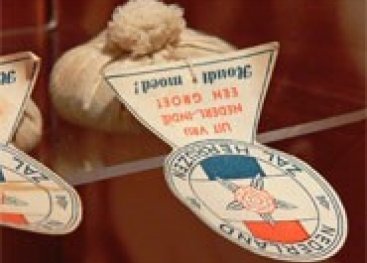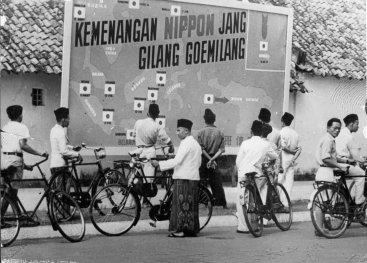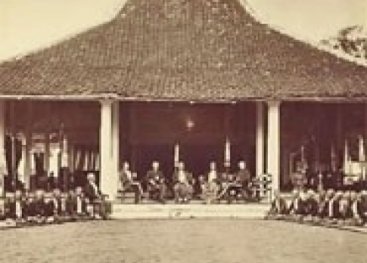
Japanisation and propaganda
Japanese
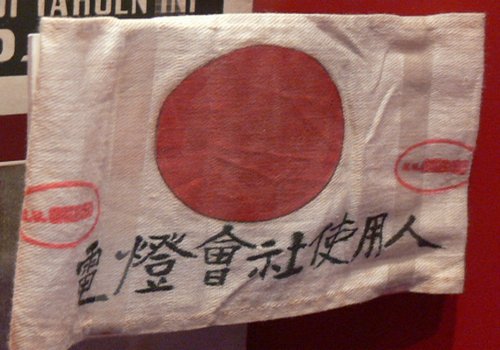
The Japanese authorities tried to eliminate Dutch influences in the Dutch East Indies entirely. They introduced the Japanese calendar, Japanese time, the Japanese flag, Japanese national holidays and the Japanese word for Japan: Nippon. The population had to bow to the Japanese flag and salute Japanese soldiers. Corporal punishment was introduced. Dutch and English were banned; the official language became Malayan, and schoolchildren had to learn Japanese.
Great East Asian Empire
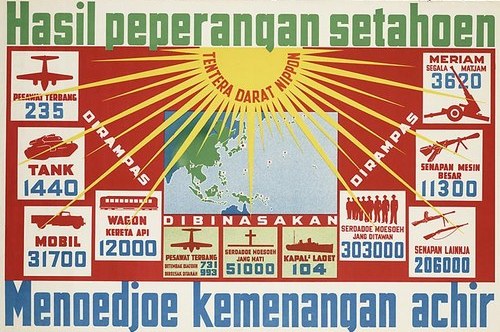
Empire propaganda poster
The Japanese wanted to establish a Great East Asian Empire, led by Japan. Posters and magazines painted a positive picture of the new ‘Great Asia for the Asians’. Many Indonesians were enthusiastic at first. They thought they would be better off than they had been under Dutch rule. The Indonesian nationalist leader Sukarno hoped he would be given executive powers and receive support for his fight for independence.
Refused to cooperate
The Dutch East Indians generally refused to cooperate with the Japanese. New registrations were organised to bring them under control. Increasing numbers of Dutch East Indians with ‘insufficient Asian blood’ were detained in internment camps.
“My first contact with the Japs wasn’t too bad. A patrol led by a senior Japanese officer drove onto the plantation in a few combat vehicles. We had to gather together. Everyone was told that from now on they had to bow deeply to every Jap, no matter what his rank. You had to bow so deeply that your back would be completely horizontal. If they didn’t think you did it well enough they would beat you. The natives also had to bow. They took a perverse delight in the fact that we Dutch could not avoid this ceremonial.”
Dutch East Indian
“You had to bow, bow, bow everywhere. Women with their hands on the front of their legs and men with their hands by their sides. If you didn’t, you’d be beaten. I was hit with the butt of a rifle a few times.”
Dutch East Indian
Great propaganda
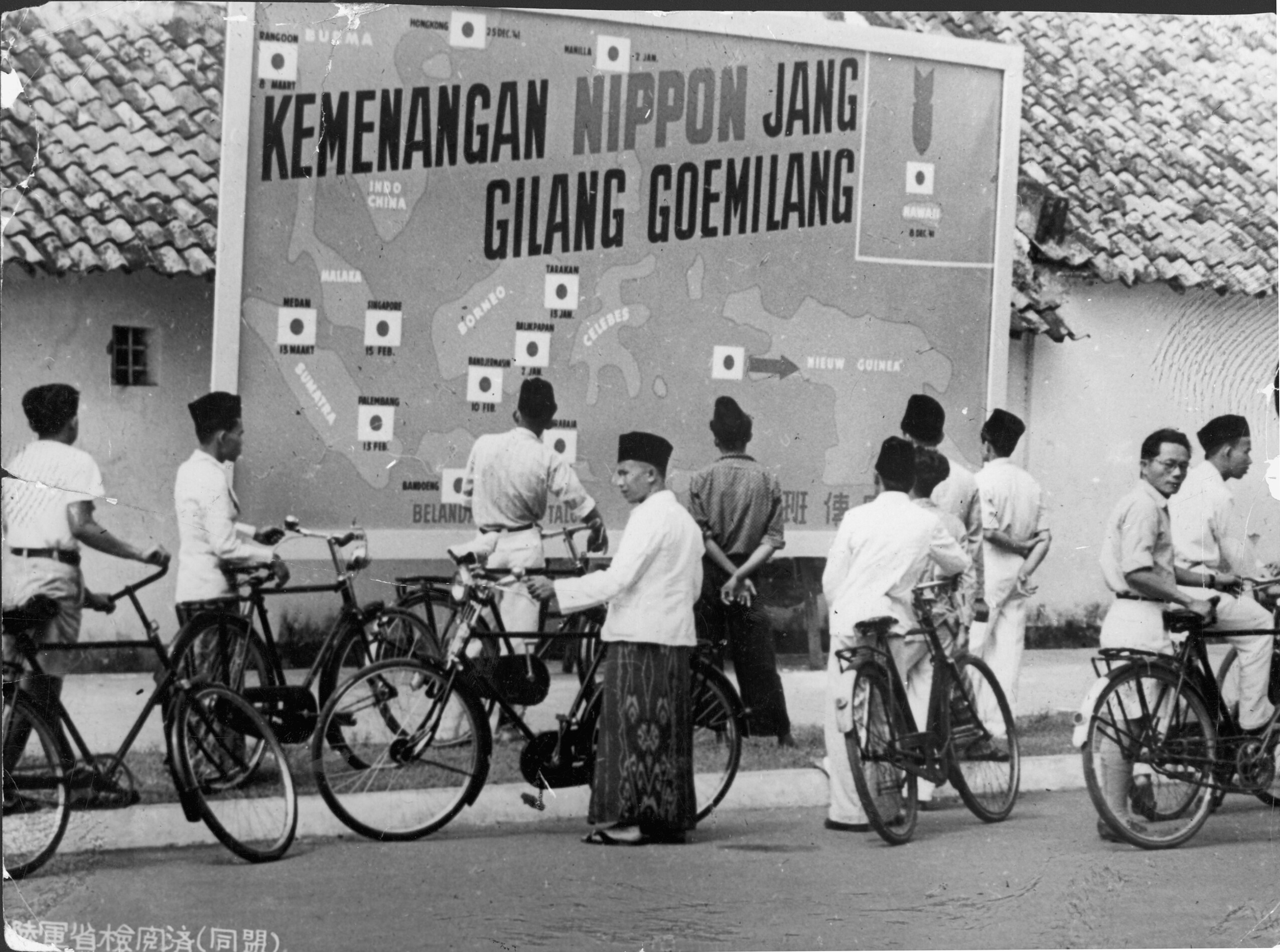
Suhendro Sosrosuwarno, an Indonesian, was a nationalist. Initially, he was attracted to the Japanese propaganda.
“I saw the Japanese as liberating us from the Dutch yoke. They tried to win us over for the Great East Asian idea. The propaganda broadcasts were great! It sounded very attractive in theory.
I thought: ‘This is what we need.’ But later the Japanese would prove very cruel rulers.”
